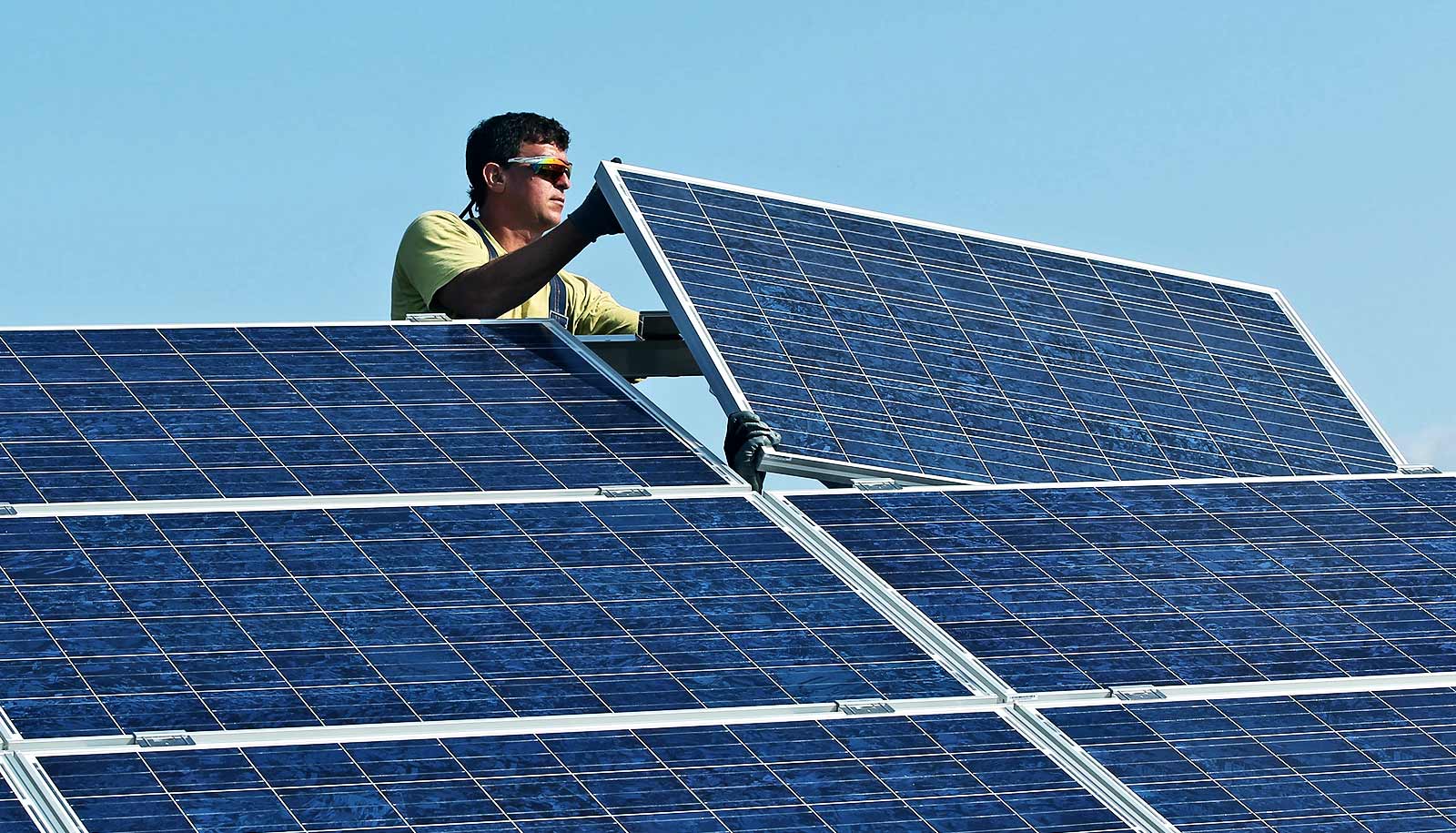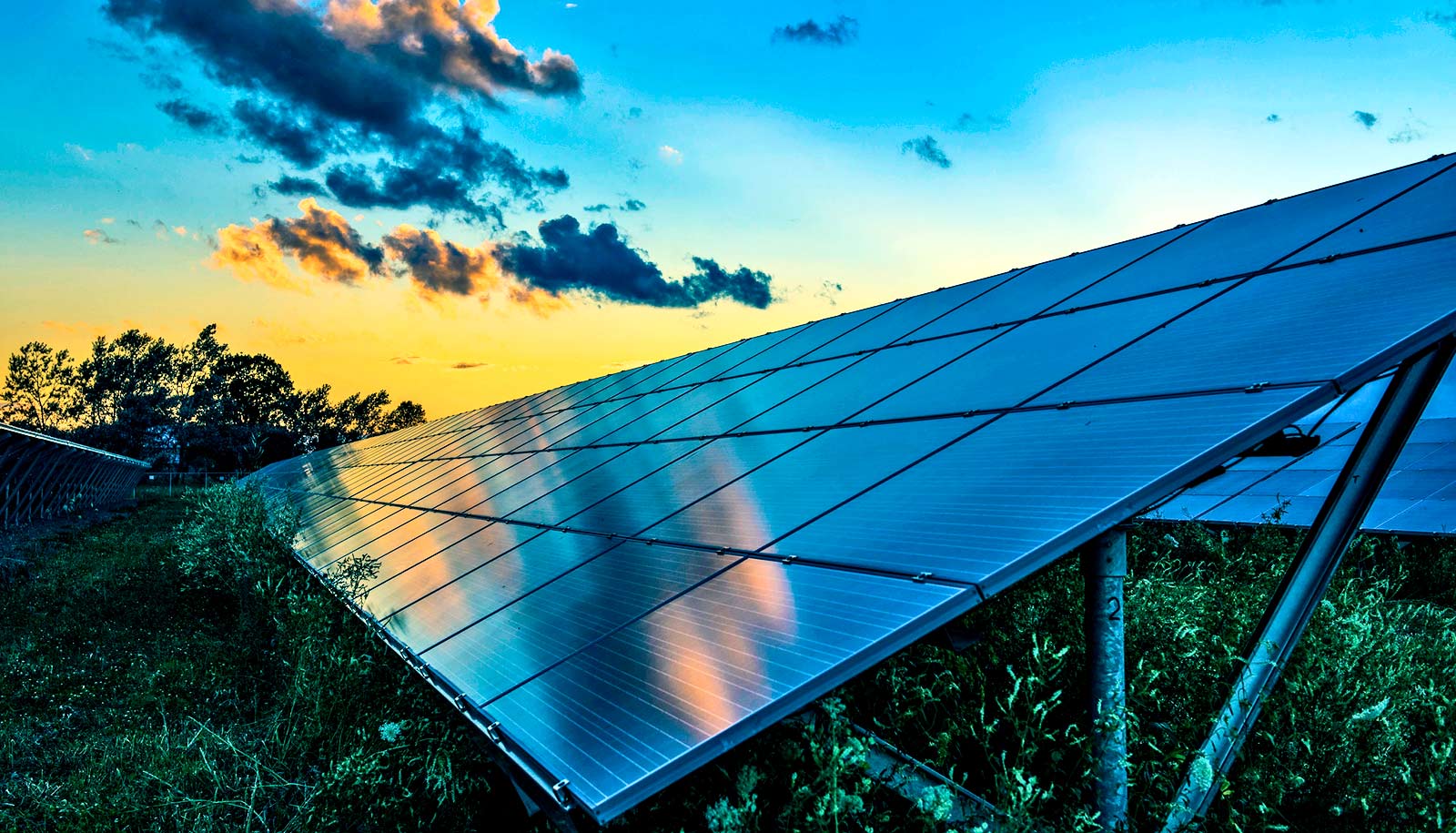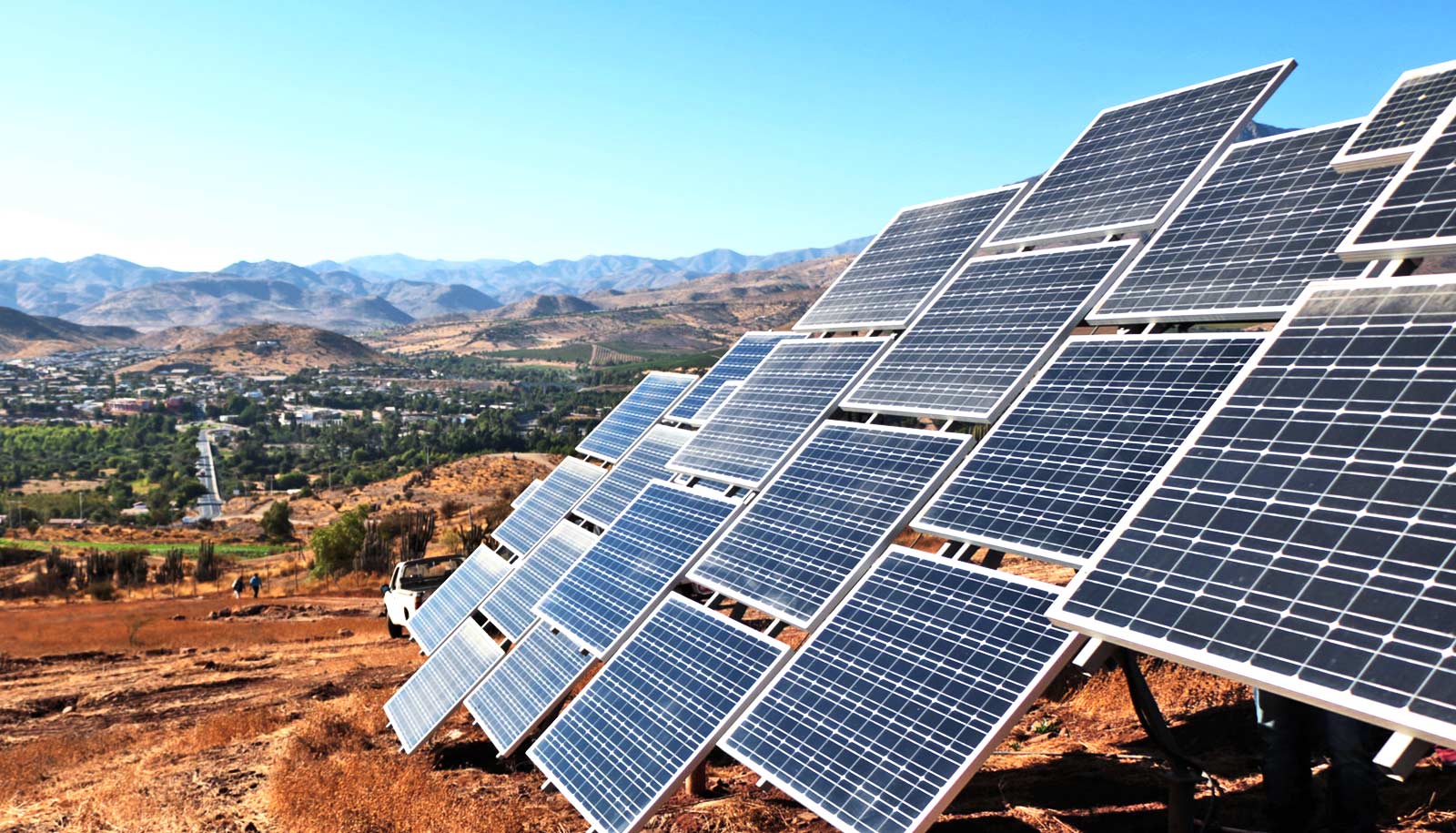Researchers have created a new tool that analyzes how well a solar farm is generating electricity.
Diagnosing degraded, or “diseased,” solar panels would contribute to lower electric bills on clean energy and cut manufacturing costs. Companies and governments have regularly invested in solar farms and lost money when weather degradation unexpectedly cut panel lifetime short.
“We need to look at the heartbeat of a solar farm to understand its diseases.”
As electricity generated from solar energy increasingly matches fossil fuels in price, companies feel pressure to keep panels living past their warranty and stretch the billions of dollars paid up front for their construction.
“We need to look at the heartbeat of a solar farm to understand its diseases,” says Xingshu Sun, a doctoral graduate in electrical and computer engineering at Purdue University.
A solar farm’s “heartbeat” is data on how well it generates electricity. The researchers created an algorithm using the physics of panel degradation that can analyze solar farm data from anywhere, essentially as a portable electrocardiogram (EKG) for solar farms. The findings appear in the journal Progress in Photovoltaics.
The algorithm is in an experimental stage, but already downloadable for other researchers to use.
‘The doctor will see you now’
“It’s the difference between daily life and the doctor’s office. Previously, facilities were just checking a solar farm’s heartbeat in a controlled environment, like with an EKG in a hospital lab,” says Muhammad Ashraful Alam, professor of electrical and computer engineering.
“But a solar farm itself is always generating new field data for us to collect and analyze, so we need to bring the EKG to the field,” Alam says. “This information-driven approach is transformative, because the approach would allow continuous monitoring and decision making. Ours is a first step in that direction.”
Real-time diagnostics would ultimately inform better panel designs—the cost-saving “treatment” that could prolong lifespan and continue to cut electrical bills.
“Solar modules should be designed differently, since they degrade differently in different environments.”
“If you look at solar modules on the market, their designs hardly differ no matter where they are in the world, just like how iPhones sold in the US and China are almost identical,” Sun says. “But solar modules should be designed differently, since they degrade differently in different environments.”
Degradation in humid environments, for example, comes in the form of corrosion, but high altitudes with no humidity cause degradation through the increased concentration of UV light. Like with human diseases, symptoms of corrosion or sun-beaten silicon tend to not show up on a solar panel until many years after the degradation started.
Without knowing when degradation is happening, companies tend to compensate for different weather conditions by under- or over-designing solar panels, driving up manufacturing costs.
Pulling the numbers
The researchers used public solar panel data from the National Renewable Energy Laboratory to pull together parameters of how well the panels are generating electricity, such as resistance and voltage. When researchers fed these parameters into the algorithm, a curve generates to show the power output of a solar cell.
The next step is improving the algorithm over time. In the long term, the researchers hope the algorithm could show how much energy a solar farm produces in 30 years by looking at the relationship between weather forecast data and projection of electric circuit parameters. Integrating the algorithm with other physics-based models could eventually predict the lifetime of a solar farm.
The US-India Partnership to Advance Clean Energy-Research for the Solar Energy Research Institute for India and the United States and the National Science Foundation supported this work.
Source: Purdue University



